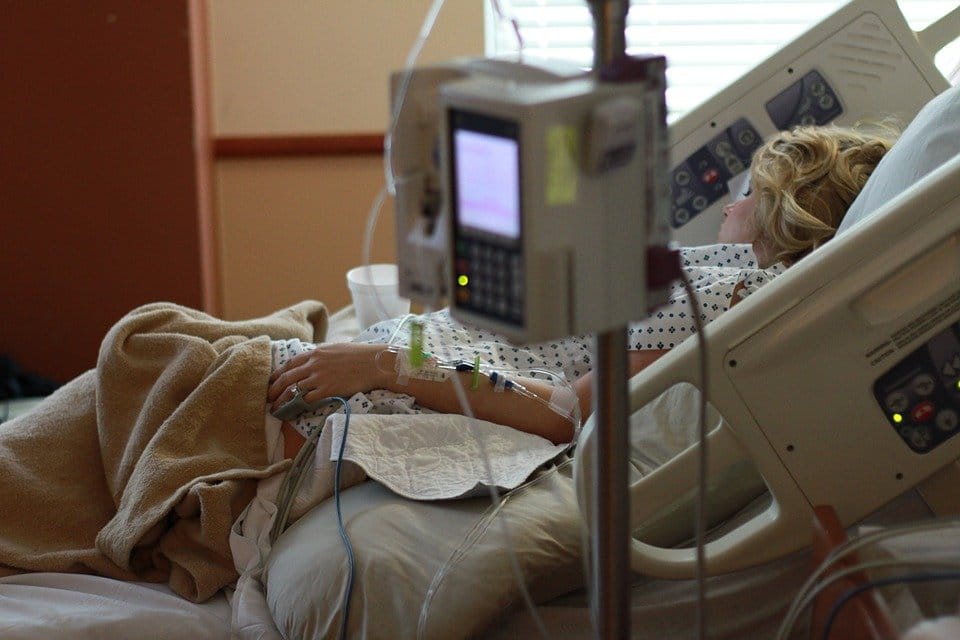
With vs. From: Interpreting COVID Hospitalization Rates
For 36-48% of COVID hospitalizations, COVID diagnosis was merely incidental. Quoting from The Atlantic “Our Most Reliable Pandemic Number Is Losing Meaning” (13 Sept 2021):If you want to make sense of the number of COVID hospitalizations at any given time, you need to know how sick each patient actually is. …. yet the overall tallies of COVID hospitalizations, made available on various state and federal dashboards and widely reported on by the media, do not differentiate based on severity of illness. Some patients need extensive medical intervention, such as getting intubated. Others require supplemental oxygen or administration of the steroid dexamethasone. But there are many COVID patients in the hospital with fairly mild symptoms, too, who have been admitted for further observation on account of their comorbidities, or because they reported feeling short of breath. Another portion of the patients in this tally are in the hospital for something unrelated to COVID, and discovered that they were infected only because they were tested upon admission. How many patients fall into each category has been a topic of much speculation. In August, researchers from Harvard Medical School, Tufts Medical Center, and the Veterans Affairs Healthcare System decided to find out.
[…]The study also points out how vaccination helps reduce the severity of the infection:Instead of meticulously looking at why a few hundred patients were admitted to a pair of hospitals, they analyzed the electronic records for nearly 50,000 COVID hospital admissions at the more than 100 VA hospitals across the country. Then they checked to see whether each patient required supplemental oxygen or had a blood oxygen level below 94 percent. (The latter criterion is based on the National Institutes of Health definition of “severe COVID.”) If either of these conditions was met, the authors classified that patient as having moderate to severe disease; otherwise, the case was considered mild or asymptomatic.
The study found that from March 2020 through early January 2021—before vaccination was widespread, and before the Delta variant had arrived—the proportion of patients with mild or asymptomatic disease was 36 percent. From mid-January through the end of June 2021, however, that number rose to 48 percent. In other words, the study suggests that roughly half of all the hospitalized patients showing up on COVID-data dashboards in 2021 may have been admitted for another reason entirely, or had only a mild presentation of disease.
The authors conclude by noting that those with COVID, but suffering from something else, should not be classified as a COVID hospitalization — to which I might add, not a COVID death.One of the important implications of the study, these experts say, is that the introduction of vaccines strongly correlates with a greater share of COVID hospital patients having mild or asymptomatic disease. “It’s underreported how well the vaccine makes your life better, how much less sick you are likely to be, and less sick even if hospitalized,” Snyder said. “That’s the gem in this study.”
“People ask me, ‘Why am I getting vaccinated if I just end up in the hospital anyway?’” Griffin said. “But I say, ‘You’ll end up leaving the hospital.’”
[…] Doron told me, referring to decisions about school closures, business restrictions, mask requirements, and so on, “we should refine the definition of hospitalization. Those patients who are there with rather than from COVID don’t belong in the metric.”

Overcounting COVID Hospitalizations For Children By At Least 40%
From “New Research Suggests Number of Kids Hospitalized for COVID Is Overcounted” (NYMag Intelligencer):The reported number of COVID-19 hospitalizations, one of the primary metrics for tracking the severity of the coronavirus pandemic, was grossly inflated for children in California hospitals, two research papers published Wednesday concluded. The papers, both published in the journal Hospital Pediatrics, found that pediatric hospitalizations for COVID-19 were overcounted by at least 40 percent, carrying potential implications for nationwide figures.Dr. Monica Gandhi, an infectious-diseases specialist at the University of California, San Francisco, and Amy Beck, an associate professor of pediatrics, also at UCSF, wrote a commentary for Hospital Pediatrics that accompanied the two studies. They wrote, “Taken together, these studies underscore the importance of clearly distinguishing between children hospitalized with SARS-CoV-2 found on universal testing versus those hospitalized for COVID-19 disease.” The studies demonstrate, they said, that reported hospitalization rates “greatly overestimate the true burden of COVID-19 disease in children.” Gandhi told Intelligencer that while the studies were both conducted with data from California hospitals, “there is no reason to think these findings would be exclusive to California. This sort of retrospective chart review will likely reveal the same findings across the country.” […]“It is critical that the risks of COVID-19 to children be portrayed accurately,” Gandhi and Beck wrote. “Scientific and media reports that inaccurately portray the risk of COVID-19 to children can do harm by alarming parents and providing justification for ongoing restrictions to in-person education and other programming. Via these studies, parents and policy-makers should be reassured that pediatric hospitalization for severe COVID-19 disease is indeed rare.”Link: “Adjudicating Reasons for Hospitalization Shows That Severe Illness From COVID-19 in Children Is Rare” Hospital Pediatrics
COVID19 Pandemic: What Went Wrong, What Went Right, and Why?
A must watch video by Dr. Amesh Adalja, “Looking Back on the Pandemic: What Went Wrong, What Went Right, and Why?” recorded at OCON 2021.Dr. Adalja, a board-certified physician in infectious disease, critical care medicine, emergency medicine and internal medicine, specializes in the intersection of national security with catastrophic health events. He publishes and lectures on bioterrorism, pandemic preparedness and emerging infectious diseases. He is a frequent guest on national radio and television programs. During the Covid-19 pandemic, he has been treating patients, engaging in high-level policy discussions, advising various organizations and communicating extensively with the public. Views expressed are Amesh Adalja’s alone, and not those of Johns Hopkins University, the USG, or any other entity.
Dr. Amesh Adalja Communicates with Clarity on Vaccines and COVID-19
Amesh Adalja communicates with clarity the relationship between COVID-19, vaccines, and vaccinated individuals who test positive for COVID-19 (“breakthrough infections”):“One of the biggest misunderstandings that persists is regarding rare breakthrough infections that occur and their importance. These rare events were always expected but perhaps poorly communicated, as no vaccine is 100 percent efficacious. Vaccines are not bug-zappers or “forcefields.”“What a vaccine does accomplish is remarkable: A vaccine primes the immune system to spring into action upon exposure to the virus and derail an infection before it has the chance to be as productive, to cause as many symptoms or to cause as much damage as it would have in the absence of this immunity. (Natural immunity also operates this way and is important.)“The early steps of the thwarted infection are what alert the immune system to the intruder, and the aftereffects of the incident are a boost to immunity.[…] “The goal is not to achieve some fantastical “COVID zero” status but to deny the virus the ability to cause serious disease, with hospitalization and death on a scale that could threaten hospital capacity. In states where vaccination rates are high, the vaccines we have in the U.S. are performing tremendously. Vaccines are taming the virus by relegating to the status of other respiratory viruses we deal with year in and year out. This was largely achieved by vaccinating those at highest risk for hospitalization. […] “Attesting to the power of the available vaccines, virtually everyone hospitalized with COVID-19 currently is unvaccinated. This is true even in states with low vaccination numbers.[…] “The virus treats a vaccinated person very differently than an unvaccinated or non-immune person and, therefore, others should treat them differently because they are not the same COVID-19 threat.”Read the rest of “COVID-19 news is confusing — but vaccination is still the answer” at The Hill.
